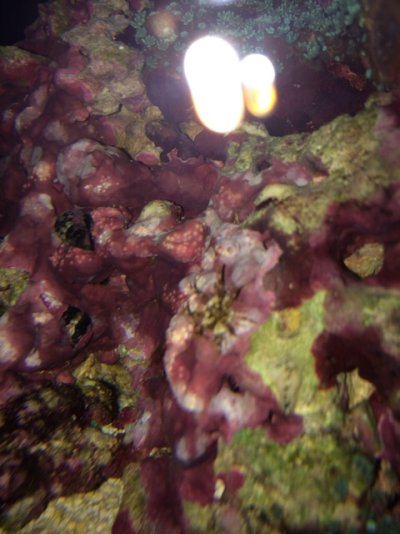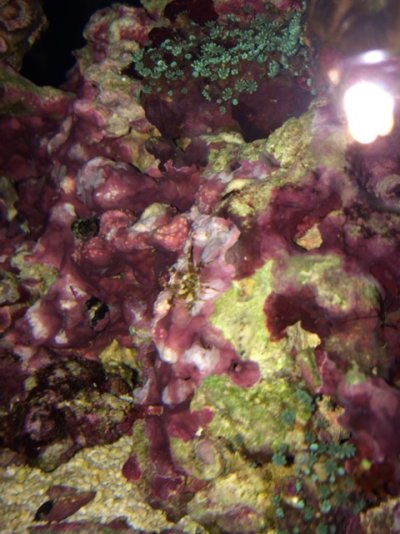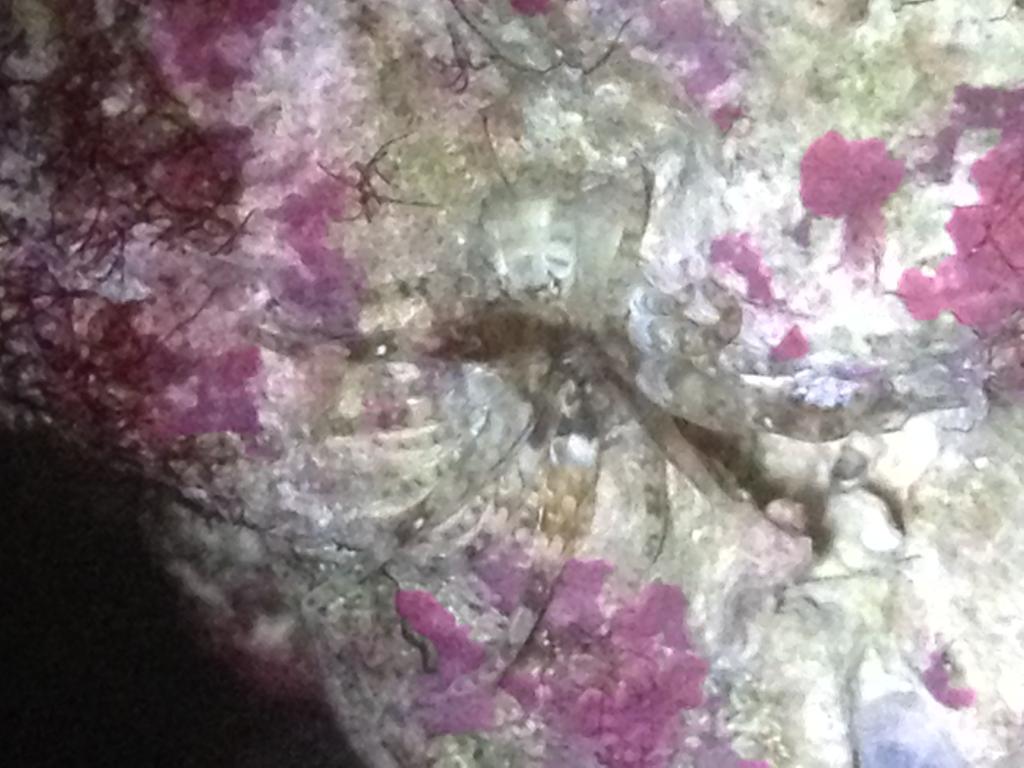You are using an out of date browser. It may not display this or other websites correctly.
You should upgrade or use an alternative browser.
You should upgrade or use an alternative browser.
ID please - anemone like creature that only comes out at night
- Thread starter ants86
- Start date
The friendliest place on the web for anyone with an interest in aquariums or fish keeping!
If you have answers, please help by responding to the unanswered posts.
If you have answers, please help by responding to the unanswered posts.
Dav3
Aquarium Advice Addict
I have the same thing. Only out when lights are off. No one could positively ID. Aiptasia is only response I got.
From my searches online the closest I could get is stripped bead anemone. And there is little info on those. Certainly doesn't behave like any aiptasia I'm aware of.
I'm sure others have these on their tanks but just don't know about them as they only come out when lights go off and they kind of blend in which makes them difficult to spot.
I am tempted to kill it just in case. But for the time being it is in the sump.
From my searches online the closest I could get is stripped bead anemone. And there is little info on those. Certainly doesn't behave like any aiptasia I'm aware of.
I'm sure others have these on their tanks but just don't know about them as they only come out when lights go off and they kind of blend in which makes them difficult to spot.
I am tempted to kill it just in case. But for the time being it is in the sump.
ants86
Aquarium Advice Regular
Thanks, Dav3. Could it be a feather duster of some sort? The more I look at it, the less it seems like an anemone because of the way the "feathers" flare out, the lack of a visible oral disk, and how quickly it retracts completely into the tiny hole in the rock.
BigRedsReefs10
Aquarium Advice Addict
- Joined
- Dec 25, 2013
- Messages
- 5,093
Looks to be some sort of glass anemone, I personally would get rid of it but that's up to you.
Dav3
Aquarium Advice Addict
ants86
Aquarium Advice Regular
Thanks again Dav3. I looked up striped bead anemone and it does look like one. Anyone know if they are harmful?
I'm going to leave it for now and continue to monitor the situation, particularly because it's going to be difficult to catch since it only comes out when lights are off and is at the bottom of the tank. If it starts moving I might have to eradicate it.
I'm going to leave it for now and continue to monitor the situation, particularly because it's going to be difficult to catch since it only comes out when lights are off and is at the bottom of the tank. If it starts moving I might have to eradicate it.
Dav3
Aquarium Advice Addict
It's funny. Well not really.
But I search the web and find plenty of posts about nocturnal anemone that looks or are described just like ours but not a single positive ID.
Any marine biologists out there?
But I search the web and find plenty of posts about nocturnal anemone that looks or are described just like ours but not a single positive ID.
Any marine biologists out there?
Mebbid
Aquarium Advice Addict
Could it be a majano?
Dav3
Aquarium Advice Addict
Doesn't appear to be that. More closely resembles aiptasia but it is nocturnal. Which is not a trait of aiptasia as far as I'm aware.
ants86
Aquarium Advice Regular
Any tips for removal without having to take the rock out of the water? It retracts incredibly fast and completely disappears into its crevice.
Dav3
Aquarium Advice Addict
Fill the hole/crevice with kalk paste or glue so it can't get out. It will eventually die unless it has another way out.
ants86
Aquarium Advice Regular
Fill the hole/crevice with kalk paste or glue so it can't get out. It will eventually die unless it has another way out.
That's a creative and potentially very satisfying solution. I have a feeling I'll enjoy doing this and might even start hunting for more of these guys. Thanks Dav3!
ants86
Aquarium Advice Regular
I have the same thing. Only out when lights are off. No one could positively ID. Aiptasia is only response I got.
From my searches online the closest I could get is stripped bead anemone. And there is little info on those. Certainly doesn't behave like any aiptasia I'm aware of.
Dav3, this article on tube anemones might be of some interest: On the Captive Biology of Tube Anemones — Advanced Aquarist | Aquarist Magazine and Blog.
Looks like our critter may be similar to the banded tube anemone pictured in the article. Lucikly, the article suggests that the stings of tube anemones are not as potent as many think, and may even be weaker than those of aiptasia.
Here are some other relevant portions of the article:
"Tube anemones are distinguished by having two distinct whorls of tentacles. Each whorl consists of a different type of tentacle."
"As adults, cerianthids dwell in a long, soft tube. The tube is constructed from specialized cnidae threads (or, ptychocysts) and mucus, though it may incorporate other materials such as sand. The outside texture of the tube is much like slimy, wet shreds of paper; the inside texture is rather slick and smooth. The tube is typically buried in mud, sand or gravel, though it may be wedged into or between rocks. It may be much greater in length than the anemone itself (>2.0 m long). The tentacular crown emerges from the distal end of the tube; however, if it is threatened, the animal can very quickly retreat beneath the substrate into the bottom of the tube."
Let me know if you or anyone else have any thoughts!
Dav3
Aquarium Advice Addict
That is possible. Though I'm pretty sure mine has an oral disc which tube anemones do not. I would need to get a closer examination of mine. Sitting in the sump that gets no light it is out 24/7 so I should be able to take another look soon.
Similar threads
- Replies
- 11
- Views
- 1K
- Replies
- 2
- Views
- 425
- Replies
- 9
- Views
- 2K
- Replies
- 10
- Views
- 2K
Latest posts
-
-
-
Nitrates up, pH and total alkalinity down
- Latest: Airborne 82nd
-
-
-



